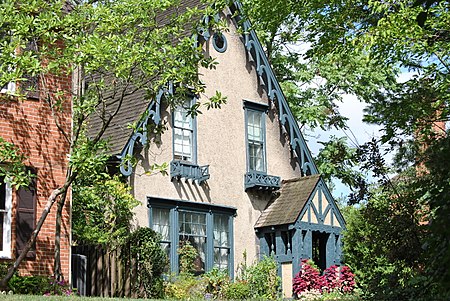Riverlea, Ohio
1939 establishments in OhioAC with 0 elementsPopulated places established in 1939Villages in Franklin County, OhioVillages in Ohio

Riverlea is a village in Franklin County, Ohio, United States, surrounded by Worthington on its north, south, and east sides, and bordered on the west by the Olentangy River, across which is Columbus. Riverlea was incorporated in 1939, a small community that formed on former farmland. The population was 599 at the 2020 census. In 2011, Riverlea and Worthington explored the possibility of the annexation of Riverlea to Worthington. Riverlea voters defeated the annexation.
Excerpt from the Wikipedia article Riverlea, Ohio (License: CC BY-SA 3.0, Authors, Images).Riverlea, Ohio
Westchester Court, Sharon Township
Geographical coordinates (GPS) Address Nearby Places Show on map
Geographical coordinates (GPS)
| Latitude | Longitude |
|---|---|
| N 40.081111111111 ° | E -83.024444444444 ° |
Address
Westchester Court 5795
43085 Sharon Township
Ohio, United States
Open on Google Maps








